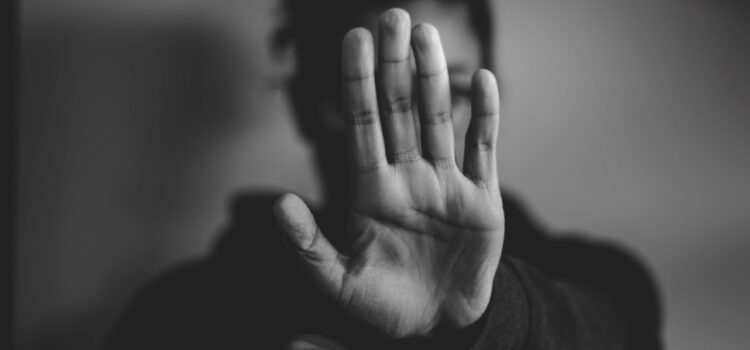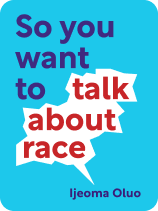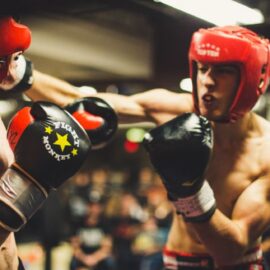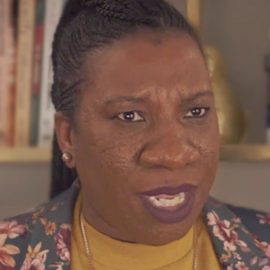

This article is an excerpt from the Shortform book guide to "So You Want to Talk About Race" by Ijeoma Oluo. Shortform has the world's best summaries and analyses of books you should be reading.
Like this article? Sign up for a free trial here .
What are the different types of racial microaggressions? What unconscious assumptions do racial microaggressions reveal?
Racial microaggressions can be direct and indirect, verbal and non-verbal. Microaggressions are important because they act as signposts for implicit bias and unconscious racist assumptions that might otherwise stay hidden.
Read about the different types of racial microaggressions and how to deal with them on both ends.
Types of Racial Microaggressions
Microaggressions are subtle acts of psychological violence against a person because they belong to a marginalized group. Microaggressions can be directed toward any group (can be racist, sexist, transphobic, and so on), but here we’re specifically talking about racial microaggressions.
Racist microaggressions can be verbal (racist jokes, comments, insults, backhanded compliments, and minimizations) or nonverbal (hair touching, purse clutching, following a customer around in a store, locking car doors as someone passes, airport security checks, and taxis that don’t stop).
Racial microaggressions can be indirect. For example, they can present as compliments: “Wow, your English is perfect!”, or “Your hair is so wild and crazy! I love it!”, or “You’re so lucky you’re black. You’ll have no problems getting into college.” And they can be unintentional. Often people genuinely don’t mean them to be offensive. For example, holding your purse closer when a person of color walks past may be an unconscious reflex, and people who ask “Where are you from?” may be showing their genuine curiosity about people from other places.
The Insidious Nature of Microaggressions
Microaggressions are linked to more extreme forms of racial oppression because they’re both manifestations of the same system.
Today, most of the more extreme forms of racism are criminal offenses, and overt displays of racism are frowned upon. While this is a positive development, it hasn’t eradicated racist beliefs—it’s just pushed them underground, where they rear up momentarily as microaggressions and then sink back beneath the surface. For example, the seemingly innocent question “Where are you from?” contains the racist assumption “If you look different, you must not be from here.”
The effects of microaggressions are cumulative. While any single one may be easily shaken off, over time they create a burden that makes it difficult to function effectively. When people of color call attention to racial microaggressions, they aren’t making a mountain out of a molehill. They’re pointing out a real mountain that’s made out of thousands of molehills.
Just because microaggressions are unconscious doesn’t mean they’re not damaging. Most people who commit microaggressions think of themselves as good, non-racist individuals. Microaggressions don’t come from a place of bad intentions. But they do come from unexamined assumptions.
How to Deal With Racial Microaggressions
If you get called out on a microaggression, stop and think. Question whether an unconsciously racist assumption might have been activated. Ask yourself: “Would I have said this to someone of the same race as me?” Remember that racial trauma is cumulative, and what you did is just one instance in a long line of similar ones. Apologize, even if you don’t fully understand what you did wrong, and seek more information afterwards on why what you did was offensive.
If you’re the victim of a microaggression, state what happened clearly. (“You assumed I don’t speak English.”) Ask some awkward questions: “Why would you say that?” or “I don’t get it. Can you explain it to me?” And remind the person that good intentions aren’t a sufficient defense: “If you really have good intentions, you’ll stop saying this to people who look like me.”
Linking the Literal and the Symbolic
Racial microaggressions often have a metaphorical component that only becomes evident when we think about them carefully. Small actions can be imbued with symbolic meaning. Two examples of this are hair touching and tone policing.
Hair Touching
Hair touching is one of the more common and obnoxious racial microaggressions.
Some of the reasons are practical. It’s unhygienic: Hair is dirty, hands are dirty, and touching someone else’s hair is generally kind of gross. Also, you might mess up the style. Curls are labor-intensive and time-consuming to create, but easy to destroy with a careless touch.
Some of the reasons have to do with basic bodily autonomy. Touching someone without their consent is simply not acceptable. We teach our kids this. Would you walk up to someone and touch them on the shoulder just to see what it felt like? So why would you do that to their hair?
And some of the reasons are linked to the racist history of this country. Black bodies have been exotic curiosities ever since the first slaves arrived. They were appraised, abused, exploited, and exoticized. Wanting to touch a black woman’s hair because it looks exotic to you is participating in this. And black bodies were considered property. By reaching out to touch someone’s hair without their permission, you’re asserting that that person is yours to touch and play with.
Tone Policing
Tone policing is a series of strategies that turn the focus of a discussion from what someone is saying to how they’re saying it. Tone policing takes the form of comments like “Okay, calm down,” “Anger won’t get us anywhere,” or “Relax!”
As with microaggressions, you might not know you’re doing it. You might, for example, just think you’re trying to keep the conversation on an even keel. Or you might think you’re simply reminding everyone to be respectful.
But in reality, tone policing paints people’s justifiable emotions about the issues as being distracting or a turnoff. Silencing someone carries the message that they don’t have the right to be heard. And putting conditions on your listening asserts your right to control the behavior of people of color for your own benefit.
Tone policing springs from the belief that there are “right” and “wrong” ways to talk about race. The “right” way is to focus on peace, love, and idealism, to rise above the bitterness, be pleasant, and present your arguments mildly and with liberal sprinklings of “not all white people.” An example of someone who spoke about racism in the “right” way is Martin Luther King Jr. (In reality, this is a sanitized version of him and his philosophy.) The “wrong” way is to be angry and provocative and to make white people feel intimidated. Examples of people who talk about racism the “wrong” way are Malcolm X, Al Sharpton, and Jesse Jackson.
Often people refuse to listen to or engage with a person of color because they’re “inflammatory” or “too angry.” The stereotype of the angry black person makes it easy to minimize or dismiss people who are justifiably angry about their suffering and that of other people of color. If you dismiss this anger, you’re saying that only people of color who prioritize the comfort of white listeners deserve to be listened to. People of color who don’t prioritize white comfort don’t deserve to be listened to. They don’t deserve equality. But equality shouldn’t need to be earned through deference to white people’s emotional needs.
The idea that the acceptability of what someone says about race depends on the comfort level of the white listener harks back yet again to the history of slavery: The main priority for the white person is their own comfort, and the main priority for the person of color should be the comfort of the white person.
The assumed right to police the tone of people of color is linked to the assumed right to police the behavior of people of color. In Chapter 3 we saw that racist law enforcement practices spring from the idea that black people are to be feared, disciplined, and kept under control.
This perceived right to discipline and control can present in more subtle ways too. For example, who polices the boundaries between acceptable and unacceptable in a conversation about race? Ask yourself: Who has the right to control whom? Who has to bend to whose wishes? Every time you tone police, you’re demonstrating that the White Supremacist system is still intact.
When you’re subject to tone policing, remember that:
- Your emotions are natural and justified. Don’t let anyone tell you not to feel angry, sad, or afraid. Your truth is valid and your experiences matter.
- You have the right to be heard.
- You do not have to earn your humanity. You deserve to be heard. You deserve to be cared about.
- You decide how you’ll fight for justice. Nobody else has the right to tell you what to do or control the way you do it.
- You don’t need anyone’s validation. If someone tries to make you earn legitimacy through the way you express yourself, this is abuse.
Exercise: Reflect on Microaggressions
Examine the belief structures hidden in microaggressions.
Most of us have done things or made comments that we thought were innocent, only to find out later that they were offensive. Describe a time that this happened to you. (Perhaps the person on the receiving end let you know that the comment was inappropriate, or perhaps you only found out by reading this book or seeing information elsewhere.)
Identify the hidden belief structures embedded in that comment. What concrete effects do these same beliefs have in people’s lives?

———End of Preview———
Like what you just read? Read the rest of the world's best book summary and analysis of Ijeoma Oluo's "So You Want to Talk About Race" at Shortform .
Here's what you'll find in our full So You Want to Talk About Race summary :
- How to have an intelligent, empathetic conversation about race
- Why people are afraid to talk about race
- Where racism came from and what fuels it






